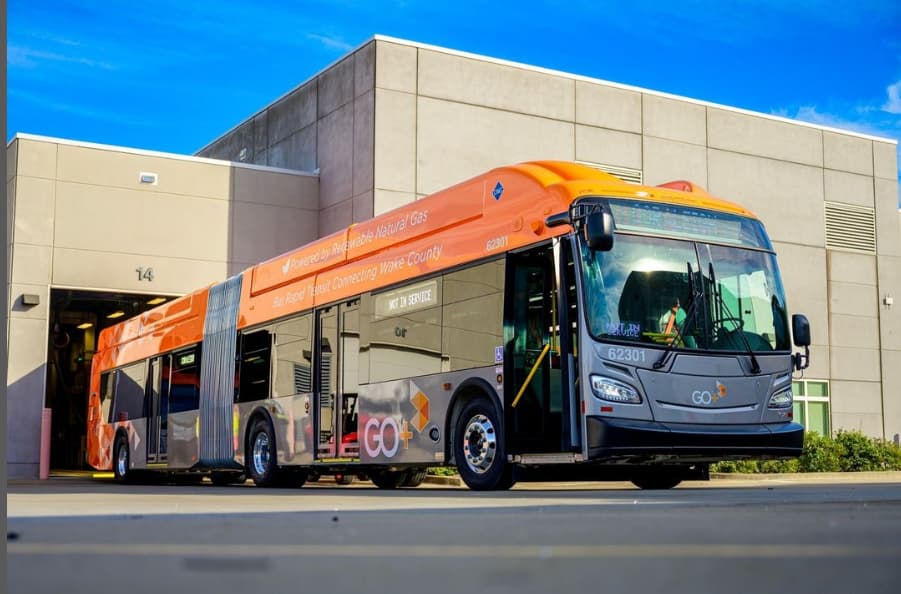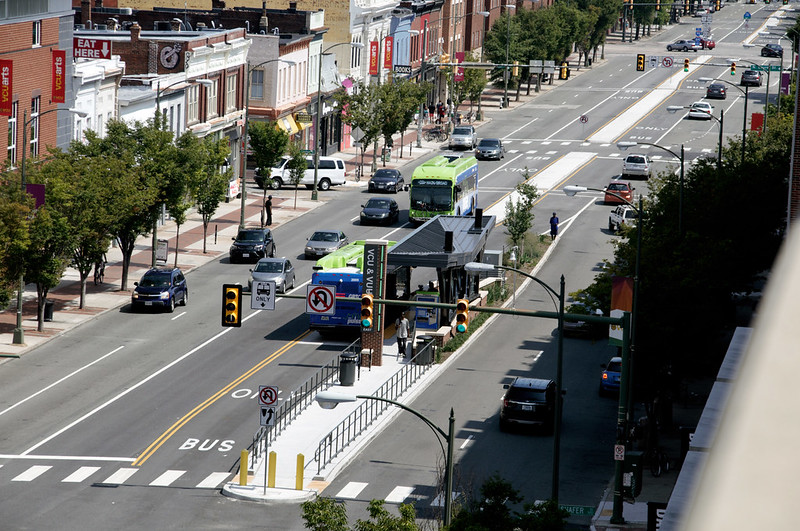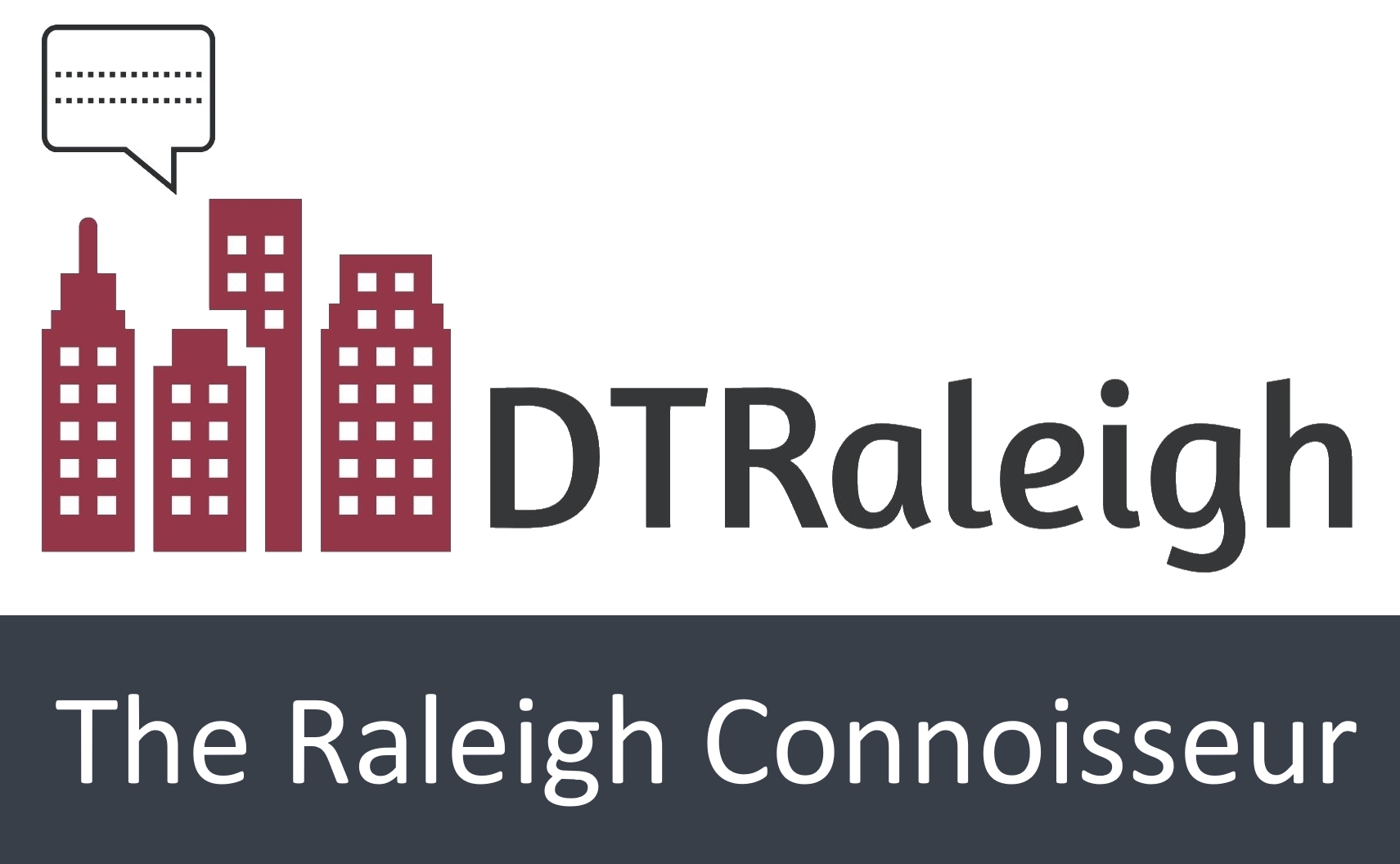
In November 2023, the first of four bus-rapid transit (BRT) routes, years in the making, broke ground. The first route out the gate will be the eastern route. This one services the New Bern Avenue corridor between downtown, WakeMed, and parts around New Hope Road. We just might be riding around in articulated buses some time in 2025.
The increase in bus service is finally happening, kickstarted back in 2016, after Wake County voters decided to increase the sales tax in order to fund expanded transit. The second half of the transit journey comes with the accompanying land use and I think 2024 will be the year Transit-Oriented Development (TOD) becomes a household phrase. (or at least to all you readers out there)
Before I lose you, put January 30, 2024 on your calendars. This is when the city council will start discussions about rezoning about 700 acres of property along the New Bern corridor for transit-oriented development and higher densities. The intent is to put more people close to transit. That’s more jobs and more homes within walking distance of a BRT station. I encourage everyone to weigh in on the topic and let council know what you think. Here are some ways to do that:
- Email City Council and let them know why you support the New Bern TOD rezoning.
- Meet with the City Councilors individually to express your support. You can find each Council member’s official email address here.
- Leave a public comment remotely via voicemail by calling 855-925-2801 and entering code 3362. Voicemails are accepted between 5 p.m. Thursday and 5 p.m. until the Monday before a Tuesday Council meeting and reviewed by City Council prior to the meeting. The limit for these public comments is 3 minutes. All public comments remotely submitted will be transcribed and become part of public record. Comments are posted to BoardDocs 30 minutes prior to the City Council Meeting.
- Attend the January 30 public hearing. To do so, you must sign up in advance using the online form. The form will be available starting Wednesday January 17. You may also call the Clerk’s office at 919-996-3040 to sign up. You are required to sign up by 5 p.m. on Monday, January 29. If you intend to utilize a presentation to accompany your remarks, you must submit presentation materials by 5 p.m. on the Friday prior to the meeting. Your presentation file should be emailed to councilpresentation@raleighnc.gov.
Some additional reading before I get into my takes:
- BRT and Transit Overlay District Zoning: How We Got Here (via Raleigh Forward)
- Raleigh’s BRT Success Depends on the TOD Rezoning (via Phil Veasley)
- What is a Transit Overlay District (TOD)? (via WakeUp Wake County)
- Letter of Support: Transit Overlay District (TOD) Text Changes and New Bern Station Area Corridor Plan (via Oaks and Spokes)
Finally, we have a whole category of threads related to Transit and Transportation on the Community so you can dive right into the online discussion. It’s the best option to stay plugged in as we follow this topic throughout the year.
Raleigh Must Implement Transit-Oriented Development Along High Frequency Transit Corridors
I’m just coming out and saying it that with increased transit we need an increase in uses. More people should live near transit. More people should work near transit. More people should shop, play and just flat out live their lives near transit. That’s the Raleigh I want to see.
Of course, it’s easy to just envision a future where a higher percentage of Raleighites use transit for their day-to-day needs compared to today. It’s much harder to actually get there and there will be tradeoffs along the way.
In my mind, the goal is to help increase the use of transit in everyone’s daily life. We make hundreds of decisions about how we are going to go about our day and when it comes to mobility, we choose, or not choose, all the time. When I’m moving about my city, or anywhere else, I decide how I want to get around based on what’s offered to me at that time or based on the place’s “Mobility Package”. Driving a car, walking, biking, riding a bus, are all options that are present to people in some form, just to name a few of the most common.
I thought it helpful to pull the 2022 American Community Survey stats for Raleigh showing data on how people get to work in Raleigh, just one part of the mobility story and how people get around.
| Method | Estimate | Percentage |
|---|---|---|
| Car, truck, or van – drove alone | 165,288 | 62.5% |
| Car, truck, or van – carpooled | 20,181 | 7.6% |
| Public transportation (excluding taxicab) | 2,808 | 1.1% |
| Taxicab, motorcycle, bicycle, walked, or other means | 11,450 | 4.3% |
| Worked from home | 64,845 | 24.5% |
| Totals | 264,572 | 100% |
U.S. Census Bureau. “Means of Transportation to Work.” American Community Survey, ACS 1-Year Supplemental Estimates, Table K200801, 2022, https://data.census.gov/table/ACSSE2022.K200801?q=United States&g=160XX00US3755000&d=ACS 1-Year Supplemental Estimates. Accessed on January 9, 2024.
Putting the margin of error and any bias in this type of survey aside, I think we can all agree that the major form of commuting in Raleigh is by a single-occupancy vehicle. Transit use is very low. However, with a transit system that operates at a higher quality and takes people to where they actually want to go, we should see the numbers increase. It may not make people sell their cars instantly but it should carry more weight during those mobility decisions we make each day.
That’s what I’m calling the Mobility Package, it’s how one can get around in our city. If we continue to make it easier to get around by cars then a car-centric city we will remain and people will continue to reach for their cars to get around.

Now let me be frank. I don’t believe at all that Raleigh turns into a European-style, transit-heavy city after the BRT, per the Wake Transit Plan, is in place. I wanted to show those figures above to level set what I see Raleigh in the near future. (still in my life time) I would predict that after BRT is in place, commuters using public transit makes a whopping jump to 3%. We’ll still be a car-centric city no doubt. The importance here is that we’ve set a baseline for higher quality and more frequent transit which becomes a part of the Raleigh culture. We’ll continue to iterate after that and need to talk about the fifth and sixth BRT lines and how to get more people near them.
The Raleigh of the future can be shaped by the transit-oriented decisions we make today. It’s not taking anything away from car-oriented travel, it’s just raising up the quality of the public transit of the future.
Gentrification and Displacement
Like I said earlier, walking the path toward a more transit-oriented Raleigh is the real challenge. Any decision to do something, including NOT doing something, leads to outcomes both positive and negative. From conversations with people in my circles and all the reading I do, a major ongoing theme these days is equity in city planning. This is apparent with the city’s efforts related to Equitable Development Around Transit, which you can dive into here.
With homeownership more out of reach than ever before these days and the cost of rent spiking after the pandemic all while incomes haven’t kept up with housing costs (watch this video from Vox) we shouldn’t be surprised that there are more homeless than ever and affordable housing is now a hot button issue politically. There is a big appetite to ensure that new developments close to the BRT lines actually serve lower-income Raleighites.
Back to my point about being a car-centric city, we want to make sure the people who can economize their household budgets by walking to a BRT station actually live there. The opposite of this are middle and high income households who may never use it or can choose when to use it, lowering their mobility costs on an as needed basis. The latter can choose to absorb these costs where the former cannot.
On the surface, this is why a rezoning to allow more height and therefore more homes is a good idea. This will lead to more people being close to the new investments in transit and should have them consider riding BRT as part of their day-to-day Mobility Package. The TOD zoning also allows for density bonuses if affordable homes are provided. This incentive has never been tried before in Raleigh (to my knowledge) so the hope is that homes are built with an income maximum to create neighbors across the income spectrum.
To be real though, there is no guarantee this will happen. New developments may be targeted toward upper income residents exclusively and the density bonuses may never be used. Concerns over displacement are common on those who sit on the fence or are against the TOD. It’s important to note that a certain level of displacement is taking place already in East Raleigh. Over the past 20 years, the area is becoming wealthier and whiter. In a majority of cases, small single-family homes are being replaced by larger single-family homes. Some missing middle and infill housing is being built but not at a scale to support a BRT line.
After thinking about this a lot, I ask myself, “Would the TOD rezoning increase or decrease the displacement in East Raleigh?” I think this is a tough one to predict but I take the stance that it will slow down displacement over time and this is why I am in support of the zoning case.
My concerns stem from the current path we are on. Without more homes, the existing ones become more lucrative and therefore go up in price. They’ll hit a threshold where tearing one down and replacing it makes more economic sense. We already see this happening so seems we’ve hit that threshold in a large part of the area. Now that we add the BRT, the area becomes more lucrative and the incentive to sell a property rises, not just along the corridor but 1 to 3 miles around it as well. This would be the status quo route which has negative consequences itself.
I support TOD because, in my mind, if it becomes more lucrative to build along the corridor, development and price pressure eases in those neighborhoods 1 to 3 miles away. Unfortunately, I acknowledge that Raleighites very close to New Bern Avenue may be impacted. Some may benefit while others may be displaced. This is a tradeoff I am willing to accept.
TOD and Equity
Throughout most of 2023, the topic of the New Bern Avenue TOD rezoning was discussed at length in the city’s planning commission. While they focus on land use, there are other factors at play here and the equity discussion wasn’t covered enough, in my opinion. (Granted, this topic went on for almost 8 months so maybe I missed it.)
What the staff has mentioned in their presentations, and I think the council should really dive into this year, are the existing support programs available as well as ideas on expansion of those programs. This is all in the Equitable Development Around Transit Guidebook listing things such as:
- Create an Equity Fund
- Acquire land for affordable housing
- Expansion of the city’s Housing Fund
- Homeowners Rehabilitation Assistance
- Anti-Predatory Purchase
- Tenant Legal Assistance
The list goes on so if this interests you, I recommend checking out the guidebook here.
Some of this is already ongoing. I say, why not put more money behind them to assist those displaced or struggling to stay in their homes. I’m really hoping that throughout 2024, this is covered more here as I see it as a direct way to help people.
Sure, this blog is about the built environment and buildings are cool and all but really, I don’t think Raleigh can get to a more equitable future without helping people directly. Let’s put aside the saving of buildings and homes for a second. We need to recognize that a portion of our population is trying to find financial security and create a stable home. That involves much more than housing and transit but since those two factors are typically the largest line items on a household budget, I’d like to think if you feel good about your home and transit situation, that’s a big step toward lowering the personal stress levels.
This is why I argue for, “TOD and.” TOD is one more tool in the toolbox. TOD and ADUs. TOD and Missing Middle. TOD and no parking minimums. TOD and equity programs.
What else should we add to that toolbox?
Closing
There certainly could be a middle ground here but I’d argue that the further you dilute this TOD proposal, the less likely a reduction in future displacement happens. At least, that’s what my crystal ball is telling me.
I acknowledge that some residents may be negatively impacted and that is always a shame. Is that any different from the impacts we’re seeing today without TOD in place?
One big counter-point to myself, one that I think carries the most weight if I’m being honest, is that alongside displacement is the fraying of a social fabric that can really benefit people in need when it’s strong. Communities form, geographically or not, and it can become a source of fun and entertainment but can even be a life-line for some.
This is something I don’t know enough about but do know that when a community starts to see people pushed out to different areas, the assistance that members found within that community start to weaken. This makes it less likely that some people get jobs or make friends or find mates. All kind of connections are less likely because of this.
I’m becoming more sympathetic to this as I’ve recently felt that my love for urban places begins with the fact that people congregate and mingle there, leading to new encounters, opportunities, and collaborations. That same downtown community aspect can and does exist in other parts of the city. The tricky part here is that it is probably very hard to measure.
While I still support the TOD, I do think there will be something lost over time. It won’t be soon or even this decade but it’ll happen eventually. To be clear, this will happen whether we rezone around our BRT lines or not. The data is showing a trend toward that.
It’ll be an interesting one to follow in 2024 and I look to many a thoughtful discussion as our councilors navigate this issue.
Comments
Comments are disabled here. That's because we're all hanging out on the DTRaleigh Community, an online forum for passionate fans of the Oak City.
